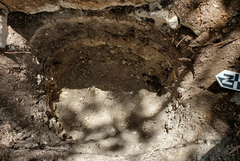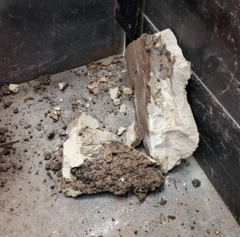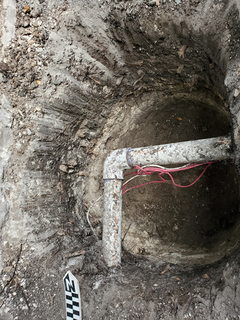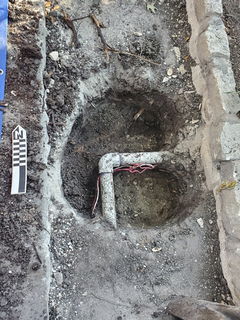No archaeological work has occurred within Crockett and Bonham Streets and the southern portion of Alamo Plaza as part of the Phase I of the Alamo Plan for the past couple weeks. Archaeological work for this project was scheduled to resume on July 16, 2020. Archaeological work will consist of monitoring the excavation of trenches for the installation of a waterline reroute along Crockett and Bonham Streets.
The Alamo Archaeologist conducted an archaeological investigation on July 14 within the footprint of the arcade located on the south side of the Church. Due to the return of two recently conserved cannons, the areas where the cannons will be mounted needed to be excavated for the installation of concrete pads and cannon support. The two conserved cannons will be displayed in the arcade along-side six previously installed cannons.
The archaeological investigation consisted of the excavation of two 2-x-2-x-2 foot test pits. Each pit was excavated in 4 inch levels, and the soils were screened to collect artifacts. One of the pits was located in the southernmost arcade arch, closest to Crockett Street. This pit exhibited evidence of fill likely related to the demolition of structures that once stood on this corner up until the late 1920s. Fragments of concrete, glass, nails, and building stone were encountered to the bottom of the test pit, indicating that much of that area has had some major previous disturbance.






